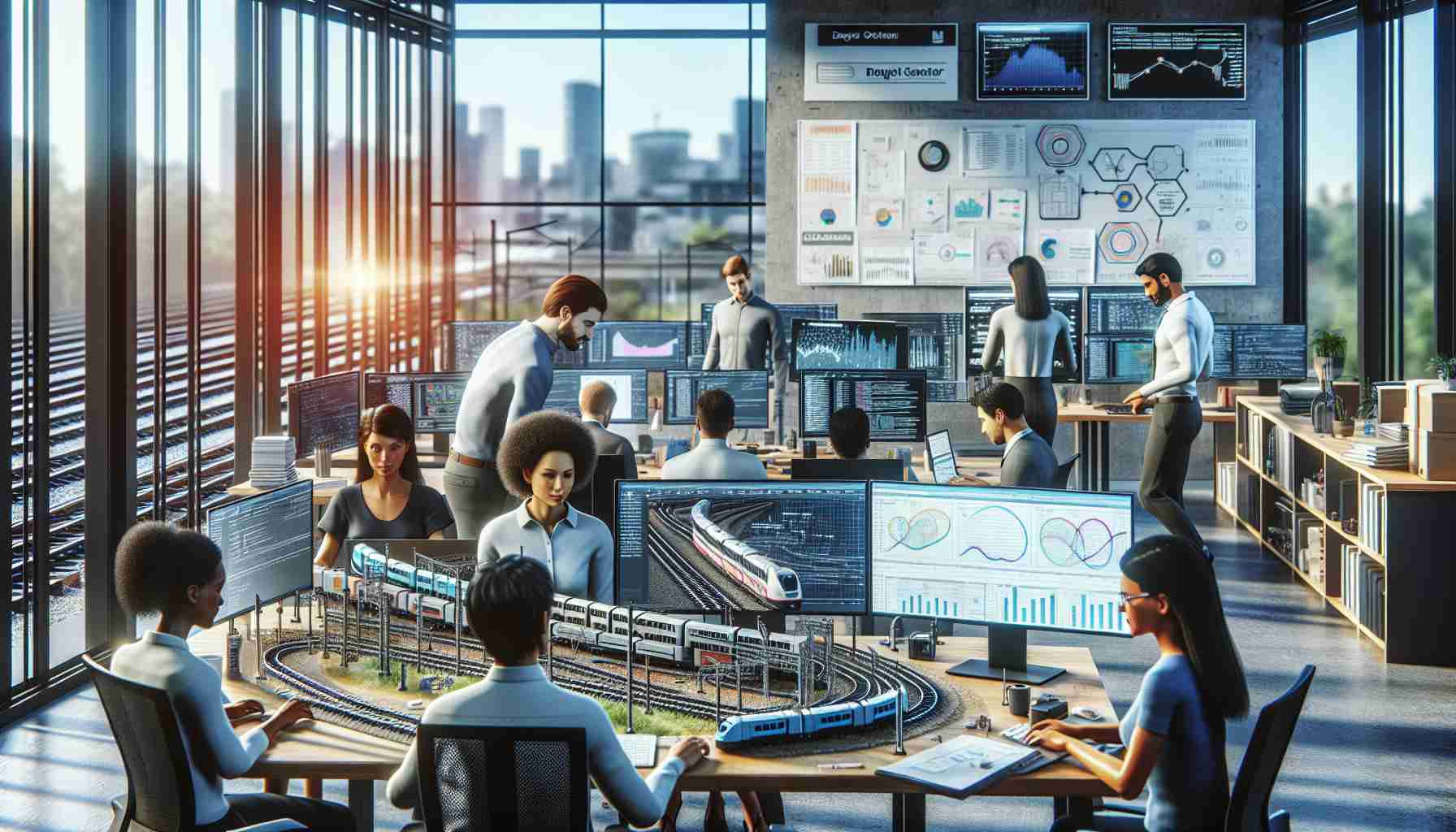In the technological hub of Montpellier, an innovative startup named RailwAI has taken on the challenge of transforming railway infrastructure maintenance. Founded in 2021 by data entrepreneurs Jean-Michel Estibals and Thomas Muffat-Jeandet, RailwAI is harnessing the power of artificial intelligence to analyze and optimize the vast amounts of data generated by rail systems, including high-speed lines, intercity networks, and urban transport like subways and trams.
The intelligent software developed by RailwAI aims to enhance the reliability and safety of train travel by offering real-time insights into the condition of railway assets. By incorporating both internal infrastructure data and external factors such as weather conditions, the software enables rail operators to make informed decisions regarding the maintenance work schedule of their teams. This proactive approach to infrastructure management not only improves punctuality and safety but also significantly reduces maintenance costs and the carbon footprint associated with rail transport.
Committing to the French and European ethos of sustainable transport, RailwAI has positioned itself as a key player in promoting the shift from road to rail travel, a move that aligns with national goals to reduce greenhouse gas emissions.
RailwAI’s innovative approach has garnered attention and accolades, earning it a spot in the “100 start-ups where to invest in 2024” by Challenges magazine and receiving public funding exceeding one million euros as a winner of the i-Nov innovation project.
The company is currently collaborating with industry giants such as Eurotunnel and Europrts, testing its solutions with various development partners including Transdev as well as implementing regional projects for the Occitanie area and the Catalan Railways.
Looking ahead, RailwAI is planning a fundraising campaign to further refine its AI-driven strategies and even contemplating expanding its technological expertise to the roadway network—though for the moment, their unwavering focus remains on elevating the rail industry to new heights of efficiency.
Current Market Trends:
The use of AI in railway infrastructure maintenance is part of a larger trend towards digitization and predictive maintenance in the transportation industry. This shift emphasizes utilizing data analytics, machine learning, and other AI technologies to predict when maintenance should be performed, to prevent failures and improve operational efficiency.
There’s a growing demand for sustainability in transport, with a particular push for modal shifts from road to rail to reduce environmental impact. Furthermore, the advancement of smart cities and the integration of urban transport networks are motivating further investments in AI for improving the efficiency and safety of public transportation.
Forecasts:
According to market analysis, the global railway management system market size is expected to grow significantly over the next few years. Predictive maintenance technologies, a part of this system, are also expected to see a notable increase in adoption. As railways around the world modernize their fleets and infrastructure, companies like RailwAI could experience rapid growth and expansion opportunities.
Key Challenges or Controversies:
Adoption challenges are substantial in this realm, as rail operators must integrate these advanced AI systems with legacy infrastructures, which may sometimes be resistant to such changes. Furthermore, concerns around data privacy and cybersecurity must be addressed, as vast amounts of sensitive data are processed and analyzed.
Another challenge lies in the need for skilled workforce capable of working with AI technologies, where a skills gap could potentially hinder the implementation of such technologies.
Advantages:
– **Improved Safety**: By providing real-time insights into the condition of rails and infrastructure, AI-driven solutions can reduce the risk of accidents and improve overall safety.
– **Cost Efficiency**: Predictive maintenance can lead to significant cost savings by performing maintenance only when necessary and preventing major repairs.
– **Environmental Impact**: With AI optimizing routes and maintenance schedules, there’s a potential for reducing the carbon footprint of rail operations.
– **Reliability**: Better maintenance translates into more reliable services, which can increase the competitiveness of rail transport against other modalities.
Disadvantages:
– **Implementation Costs**: Initial setup and integration of AI systems can be costly and require substantial investment.
– **Complexity**: AI systems can be complex and require skilled personnel to interpret data and maintain systems.
– **Technological Dependence**: Over-reliance on technology could become a risk factor if systems fail or are subjected to cyber-attacks.
– **Data Management**: Handling the vast amount of data generated could be challenging and could raise concerns related to privacy and security.
As RailwAI grows and seeks further investment, a key question will be how effectively it scales its technology and adapts to the diverse global railway systems. With current trends and needs, RailwAI seems to be on a promising trajectory, but it must navigate the complexities of market expansion and technological integration successfully.
For more information on sustainable transport and the use of AI in rail systems, a related link of interest could be the International Union of Railways (UIC) at UIC. Please note that this link is provided for informational purposes only, and I cannot guarantee its validity post my knowledge cutoff date.

